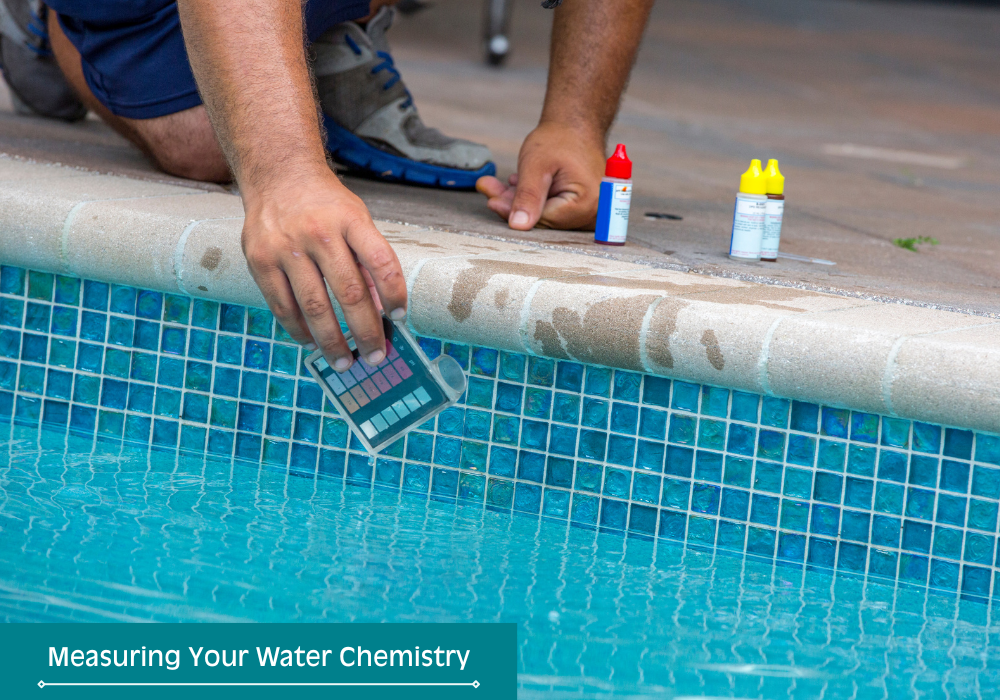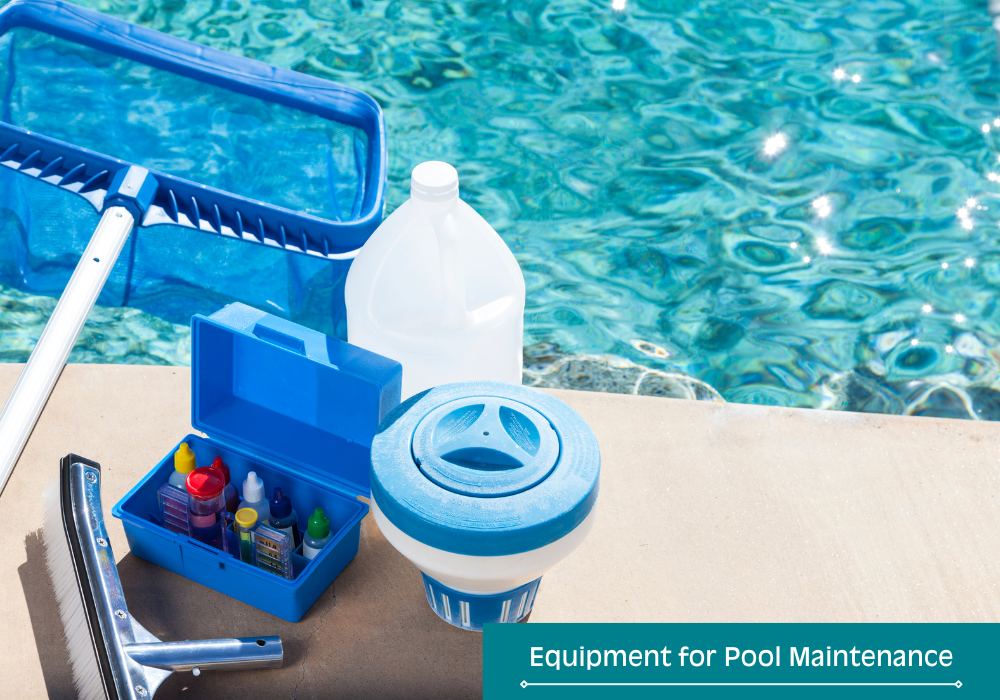Beginners Guide to Pool Cleaning and Maintenance
Owning an in-ground pool is a dream come true for many homeowners.
Relaxation, recreation, and fun for the whole family is right outside your door. Even if you have a pool for your children, you may also appreciate the opportunity to de-stress with a dip in the water after work. A pool can even add value to your property if you choose an appropriate size and design, and it’s well maintained.
That said, swimming pools require ongoing maintenance, which can be expensive and time-consuming. The national average cost of pool upkeep is $229 per month. This doesn’t include repairs, electricity, and water replacement.
The first step in pool ownership is understanding the maintenance requirements, equipment, and processes for keeping it clean. Once you grasp these requirements, you can have realistic expectations for pool ownership and handle basic maintenance tasks on your own.
Why Is Pool Maintenance Important?
Pool maintenance is crucial for many reasons. The most important one is safety. You must keep the water clean and safe, preventing the growth of harmful bacteria and algae. Infestations not only harm your family's health, but they can be costly to treat.
Proper pool maintenance can eliminate health hazards and limit the financial burden of ownership. Caring for a pool is an ongoing effort requiring an understanding of different pool components, steps for keeping them clean and safe, and the timing for each type of maintenance.
Understanding the Components of a Swimming Pool
When developing a comprehensive pool maintenance plan, consider all the components of your swimming pool, from the water chemistry to interior surfaces and surrounding elements.
Water Chemistry
 Pool water chemistry refers to the chemicals necessary to create safe and comfortable conditions. These compounds prevent mold and bacteria but can also stop mineral buildup, corrosion, and scaling.
Pool water chemistry refers to the chemicals necessary to create safe and comfortable conditions. These compounds prevent mold and bacteria but can also stop mineral buildup, corrosion, and scaling.
pH balance is an important consideration. Seven is a neutral pH reading. Readings under 7 indicate acidity; over 7 suggests alkaline water. pH readings between 7 and 7.6 are ideal. Measurements outside this range mean the water can cause skin irritation.
Calcium hardness, alkalinity, and chlorine content also factor into the pool’s water chemistry.
Florida Health puts these standard chemical measurements for a pool as follows:
-
Chlorine: 2-3 ppm
-
Alkalinity: 80-120 ppm
-
Calcium hardness: 200-400 ppm
Weekly testing reveals changes to water chemistry, but you may want to assess conditions more often in very hot or wet weather.
You should also shock your pool by increasing the amount of chlorine for a short time to combat algae and bacteria growth. If you swim daily, shock it every week. Perform this job twice a month if you only use the pool occasionally.
Products for shocking a pool include calcium hypochlorite. Ratios vary but are typically around one pound of product per 100,000 gallons of water. You may need to wait up to 24 hours to enter the pool after shocking it to avoid skin irritation from the high concentration of chemicals.
Interior
Pool interior materials include concrete, vinyl liners, and fiberglass. These options have different looks and lifespans. Typically, people see finishing layers like plaster, tile, or rock.
Concrete with plaster finishing is cost-effective. Concrete with tile or stone finish is more aesthetically pleasing. However, it typically only lasts about eight to 12 years.
Vinyl liners provide a smooth surface but may need replacement every 10 to 18 years due to deterioration caused by pool chemicals and ultraviolet sun rays. Alternatively, fiberglass has a high upfront cost but is very low-maintenance and can last 10 to 15 years.
With regular maintenance like brushing and chemical balancing, pool owners can extend the lifespans of their pool surfaces. Pool interior servicing frequency will ultimately depend on factors like water chemistry, usage, and climate.
Exterior
Common materials for pool exteriors include concrete, tiles, natural stone, and wood or composite decking.
-
Concrete: Concrete is versatile, flexible, and easily customizable. It is also highly durable but may need resealing every two to five years.
-
Tiles: Available in innumerable colors and designs, tiles are low-maintenance and offer a clean aesthetic. They’re waterproof if correctly sealed, and durable.
-
Natural stone: Natural stone is a preferred construction material for landscaping near pools due to its durability. It also comes in a variety of colors and textures.
-
Wood decking: While aesthetically pleasing, wood may change color or develop mold when wet. Decking with waterproof composite, such as wood fiber and plastic, or wood with waterproof stain can address this problem.
Landscaping around the pool can include plants, shrubs, and trees. These elements require careful maintenance so that leaves or branches don't blow into the water, which would increase the need for skimming and water chemistry adjustments.
Filtration System
A pool filtration system maintains clean and safe water by removing debris, contaminants, and bacteria. A filtration system has three main components: a pump, a filter, and a skimmer or strainer.
Located in a pool house or shed near the water, the pump draws water through the strainer and returns it to the pool.
Pool filtration system maintenance frequency depends on pool usage and environmental factors. Most filters require backwashing once per week, but some cartridge filters and those using diatomaceous earth can go longer between cleanings.
Pool Maintenance Equipment
 Maintaining a pool requires a variety of tools and accessories. Here's a list of essential and convenient extras.
Maintaining a pool requires a variety of tools and accessories. Here's a list of essential and convenient extras.
-
Water testing kit: Includes test strips or liquid reagents to measure pH levels, chlorine, alkalinity, and other chemicals.
-
pH and alkalinity agents: Include pH up (sodium carbonate) and pH down (sodium bisulfate) compounds.
-
Chlorine: Serves as the main disinfecting agent in pools and treats algae and bacteria.
-
Pool skimmer: A pole with a net to remove debris from the pool surface.
-
Filters: Can be sand, glass, cartridge, or diatomaceous earth (DE).
-
Pool brush: To scrub the pool walls and floor to prevent algae and scale buildup.
-
Pool cover: Prevents leaves, debris, and animals from falling into the pool when it's not in use.
Pool maintenance equipment requires safe storage in a pool house or shed. This protection is especially important for chemicals, which cannot be left in the open. Also, bulky elements like pool covers are best kept in a pool house.
How To Clean a Pool
In most cases, you’ll need to follow these steps when cleaning your pool:
-
Clear off debris using a pool skimmer. You can also use a pool vacuum if there’s dirt or debris on the bottom of the pool.
-
Brush the pool wall and floor to prevent algae growth and mineral buildup.
-
Backwash the pool filter to clear debris weekly or monthly (depending on filter type).
-
Balance the pool water by adding chlorine and pH up or pH down compounds as needed. A test strip will show you the current state of the water and help you choose the amount of adjusters to add.
-
Run the filter for at least six hours daily even when not using the pool.
Do a visual inspection to check for leaks, cracks, and other damage. If you aren’t using the pool for a long time, put a cover on it to keep debris out.
Tips for Keeping a Pool Clean
Here are some general tips that all pool owners can use to keep their pools clean.
-
Create a maintenance calendar.
-
Watch how-to videos to learn the best techniques for cleaning.
-
Maintain proper water chemistry with regular testing and adjusting pool water chemistry. Small adjustments are easier than major corrections.
-
Skim and brush your pool frequently to avoid excessive buildup.
-
Maintain the filter system by running it for at least six hours a day. You can increase this time in half-hour increments if the water is cloudy.
With the right approach, you can handle most basic pool maintenance tasks on your own and only rely on professionals for major water treatments and repairs.

Facebook Comments Box